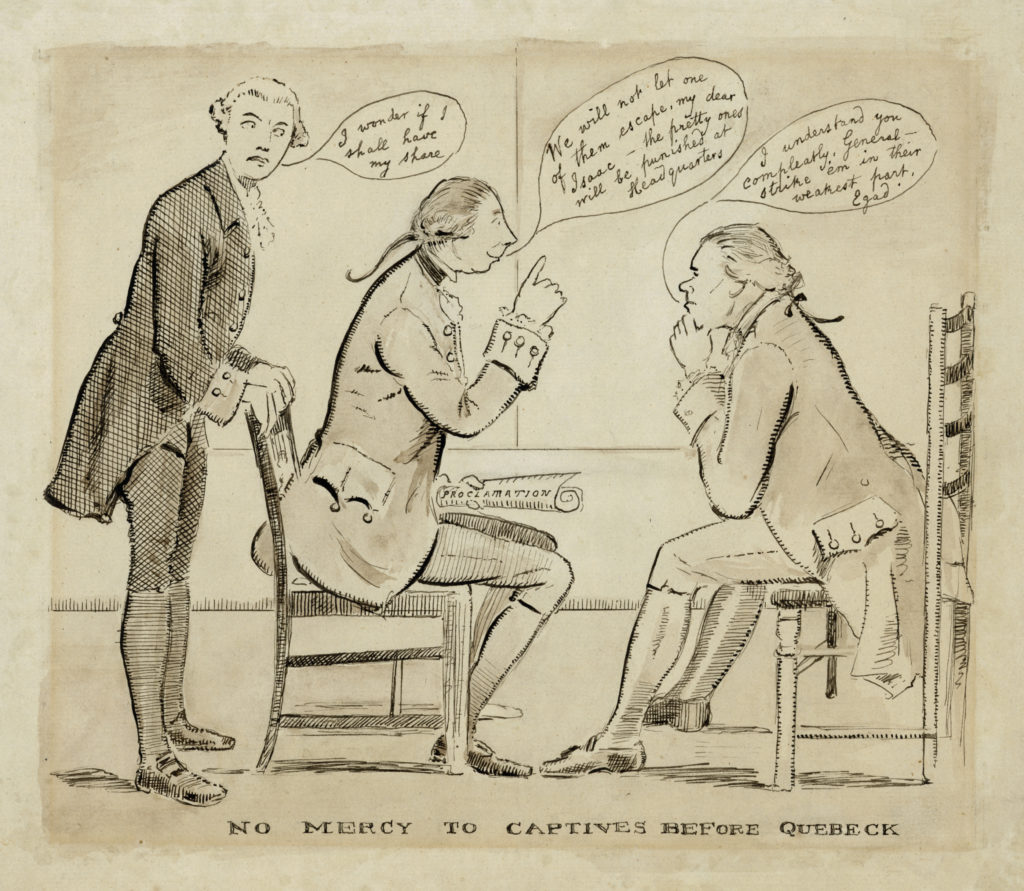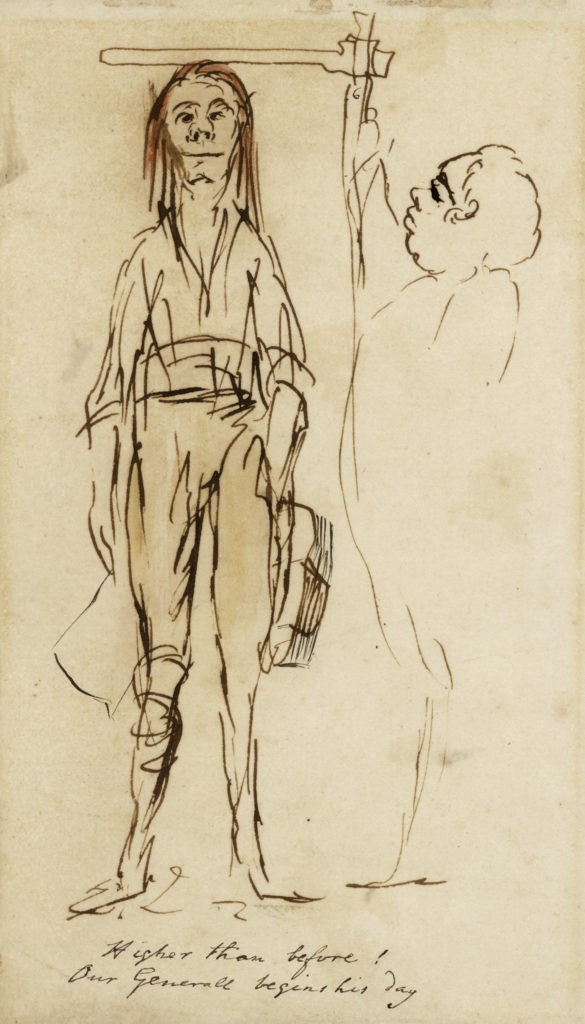The earliest known English-language humour in Quebec came about in the weeks preceding the British Conquest of 1759. George Townshend was third in command in this expedition, but of a higher social class than Wolfe. In his spare time, he drew caricatures. Relations broke down with General Wolfe, whom Townshend saw as an arriviste, a weak leader, and “a fiery-headed fellow fit only for fighting.” In Townshend’s cartoons, Wolfe is depicted as tall, gaunt, chinless, and with a pointy nose. He frequently clutches a handkerchief, because he was ill for much of the campaign. In some cartoons, Wolfe makes thinly-veiled references to raping the conquered women in Quebec. In others, Wolfe inspects latrines. These were ways of discrediting his leadership.
Wolfe’s death in battle made him a hero, and the caricatures were tucked away for centuries. Until the 1970s, the few studies in which they were mentioned considered them too vulgar to be reproduced, and potentially seditious. Since then, Townshend has been rehabilitated and even called “the first great English caricaturist.”

McCord Museum, M1792

McCord Museum, M19857
Further Reading
Hardy, Dominic. “Caricature on the Edge of Empire: George Townshend in Quebec.” The Efflorescence of Caricature, 1759-1838, edited by Todd Porterfield, 11-30. Burlington, VT: Ashgate, 2011.
Stacey, C.P. “Townshend, George, 4th Viscount 1st Marquess TOWNSHEND.” Dictionary of Canadian Biography, vol. 5, 1983.